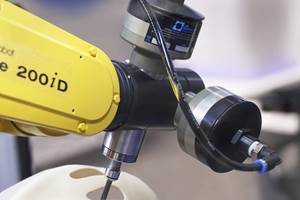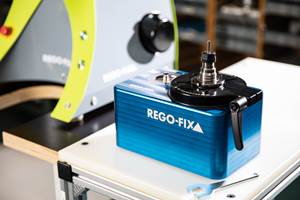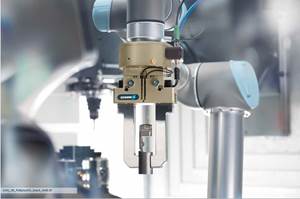Make Maximum Use of the Magazine
This shop streamlined its selection of cutting tools to machine a number of parts on a pallet system. Cutting down on cutters delivered other benefits as well.
Share






How do you get 60 tools to run 142 part numbers? For Precise Machining & Manufacturing of Tulsa, Oklahoma, answering that question was key to dramatically improving productivity in the production of aluminum aircraft parts.
Still another benefit relates to optimizing the process. A shop that routinely uses hundreds of tools probably does not have a hope of understanding all of them well. But when a much smaller number of tools do most of the work, the shop is much better able to understand each of them. With just three tools doing much of the pallet system’s milling, Precise has been able to learn precisely what speed and feed rate it can achieve from each of these tools in various cutting conditions, and what tool life to expect. Because these few cutters are so vital, the shop has been able to maximize the value it gets from each one.
Related Content
The Future of High Feed Milling in Modern Manufacturing
Achieve higher metal removal rates and enhanced predictability with ISCAR’s advanced high-feed milling tools — optimized for today’s competitive global market.
Read MoreHow to Accelerate Robotic Deburring & Automated Material Removal
Pairing automation with air-driven motors that push cutting tool speeds up to 65,000 RPM with no duty cycle can dramatically improve throughput and improve finishing.
Read MoreFive Common Mistakes Shops Make with ER Collets (And How to Prevent Them)
Collets play a crucial role in the machining process, so proper tool assembly and maintenance is important. Here are five potential pitfalls to avoid when using ER collets.
Read MoreLean Approach to Automated Machine Tending Delivers Quicker Paths to Success
Almost any shop can automate at least some of its production, even in low-volume, high-mix applications. The key to getting started is finding the simplest solutions that fit your requirements. It helps to work with an automation partner that understands your needs.
Read MoreRead Next
Machine Shop MBA
Making Chips and 91ÊÓƵÍøÕ¾ÎÛ are teaming up for a new podcast series called Machine Shop MBA—designed to help manufacturers measure their success against the industry’s best. Through the lens of the Top Shops benchmarking program, the series explores the KPIs that set high-performing shops apart, from machine utilization and first-pass yield to employee engagement and revenue per employee.
Read MoreAMRs Are Moving Into Manufacturing: Considerations for Implementation
AMRs can provide a flexible, easy-to-use automation platform so long as manufacturers choose a suitable task and prepare their facilities.
Read MoreLast Chance! 2025 Top Shops Benchmarking Survey Still Open Through April 30
Don’t miss out! 91ÊÓƵÍøÕ¾ÎÛ's Top Shops Benchmarking Survey is still open — but not for long. This is your last chance to a receive free, customized benchmarking report that includes actionable feedback across several shopfloor and business metrics.
Read More


















